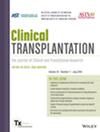Kidney transplant recipients are immunocompromised and require lifelong follow-up. Recipients face geographic, socioeconomic, and logistical challenges when seeking follow-up that can be alleviated using telemedicine. We aimed to understand patient experiences and preferences regarding telemedicine video visits and highlight insights to advance adopting hybrid telemedicine/in-person transplant care.
We conducted qualitative in-depth, semi-structured interviews with kidney transplant recipients between November 18, 2022, and January 11, 2023. Participants had follow-up at ≥12 months post-transplant via telemedicine at a tertiary transplant center. Study enrollment continued until data saturation was reached (n = 20 participants) when no new information emerged from additional interviews. Transcripts were analyzed using inductive thematic analysis.
Participants median age was 58 years (IQR, 52–72), and 50% were female, 45% were White, 30% were Black, 15% were Asian, 10% were Hispanic/Other persons, and 30% were out-of-state residents. We identified the following seven themes: (1) reducing travel time, (2) minimizing financial burden (decreasing travel-related expenses and lost wages), (3) engaging patients within their comfort space, (4) establishing rapport with patients, (5) limitations of the virtual physical exam, (6) enhancing access to transplant providers (maximizing adherence to follow-up), and (7) lowering risk of communicable diseases.
Integrating telemedicine with in-person visits enhances post-transplant follow-up care. A hybrid model should leverage the strengths of both modalities, ensuring patient access to care and being patient-centered and flexible. Efforts are needed to advance technological tools in physical examination and human connection, and assess patient outcomes. Policymakers and healthcare systems need to incentivize the adoption and expansion of telemedicine in transplant care.



